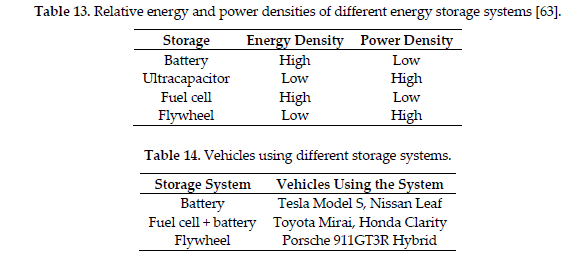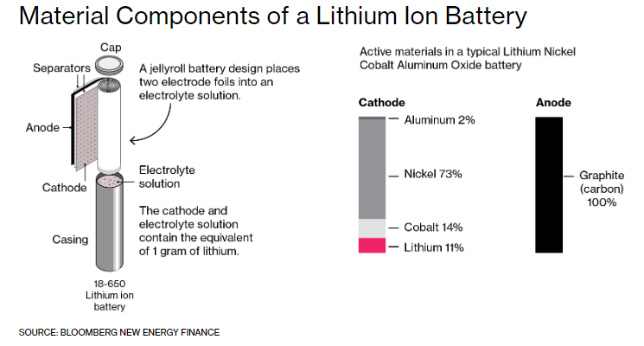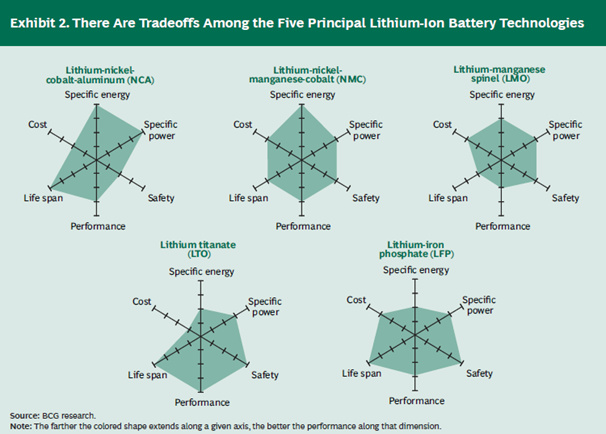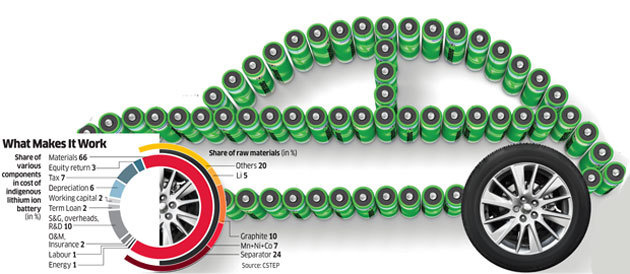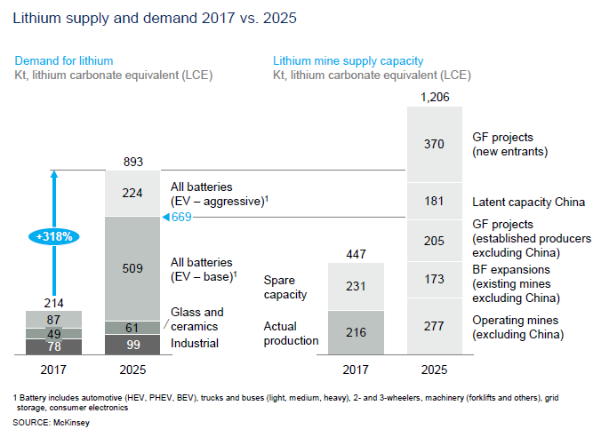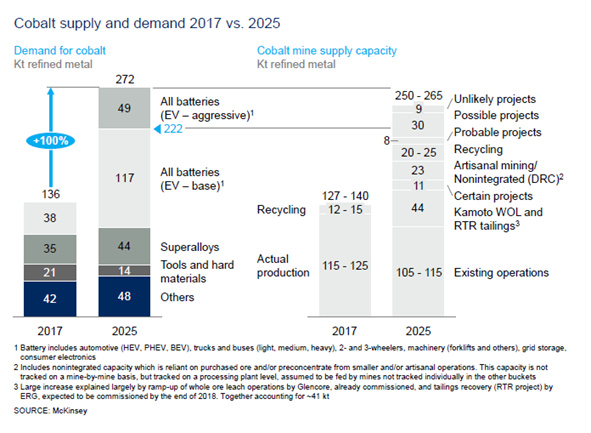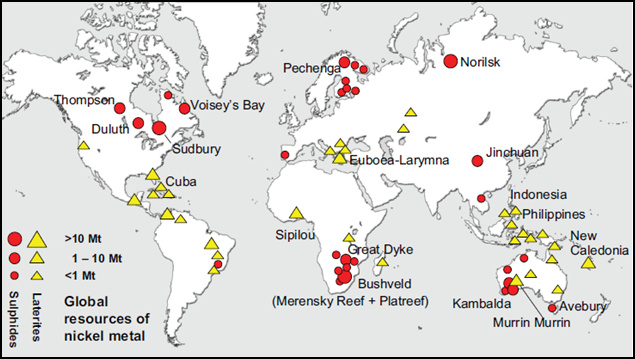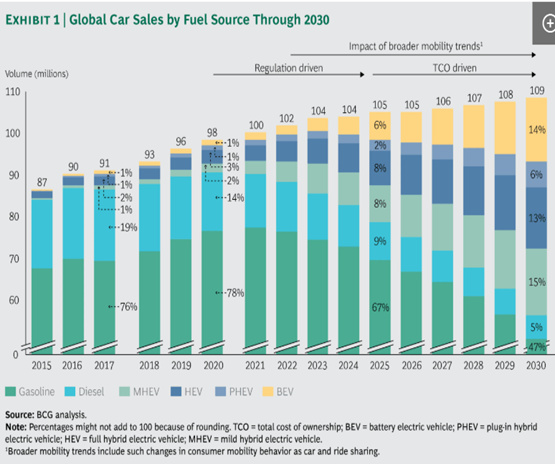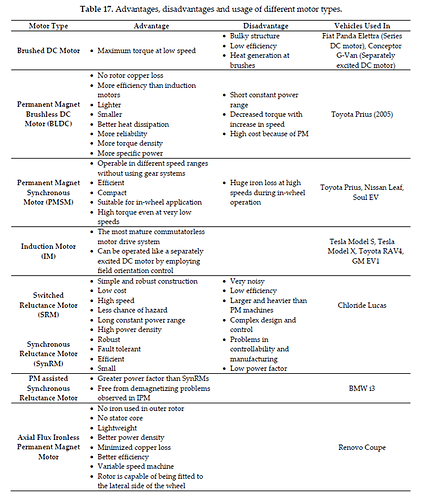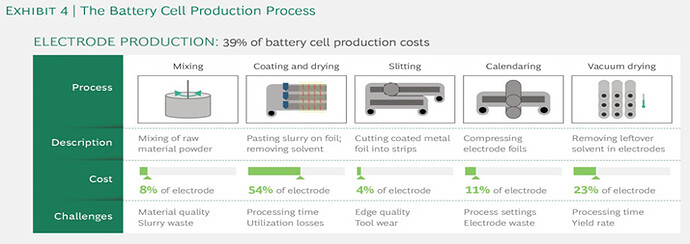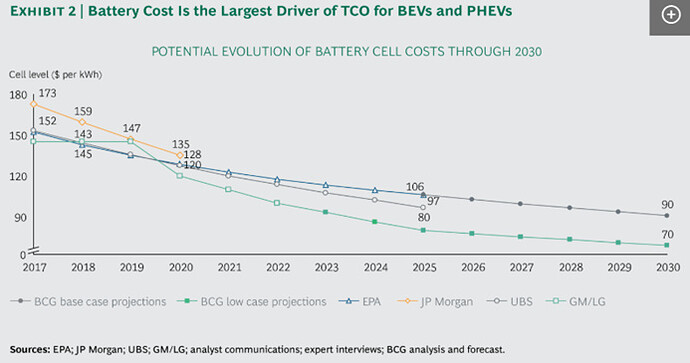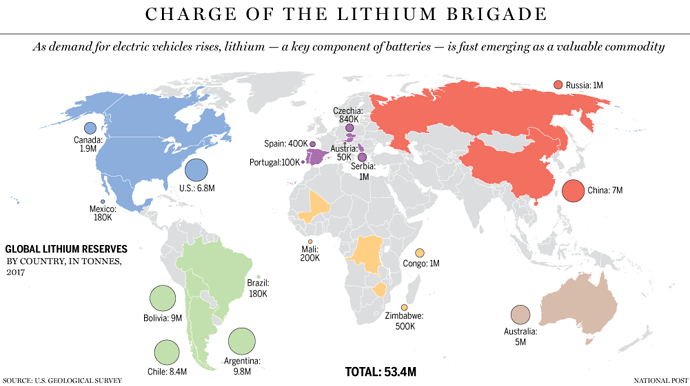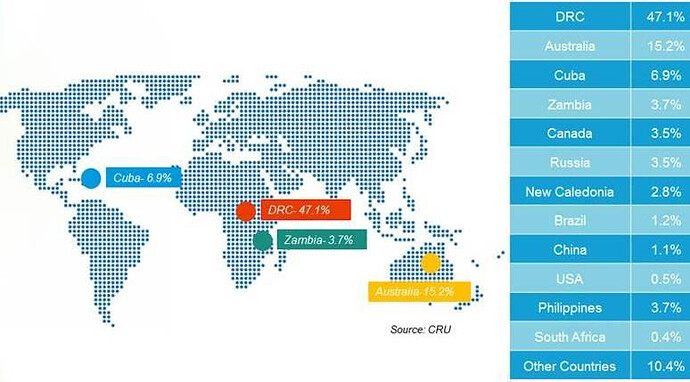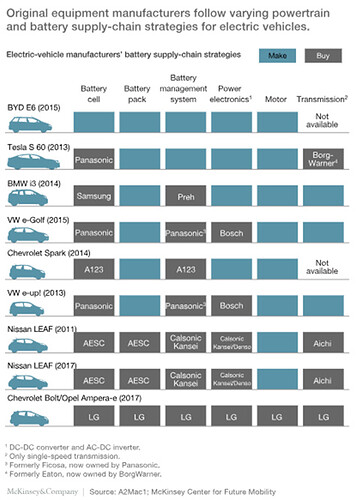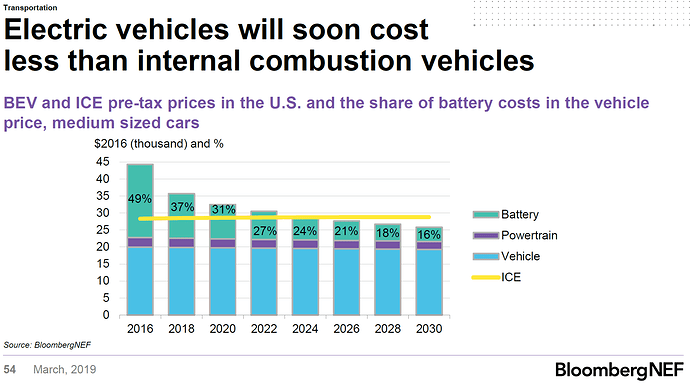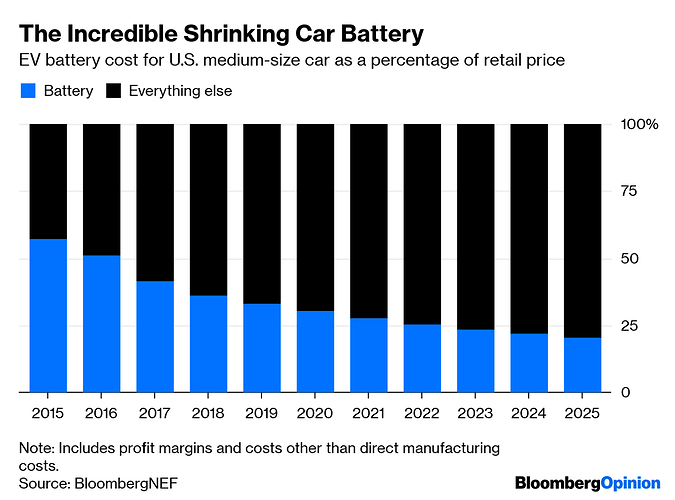Hi Ayush,
Hope you are keeping well!
We follow the EV adoption cycle closely.
Definitely public transport buses are low hanging fruit and these will be “early conversions”.
Niti Aayog is also pursuing a vision of sale of Electric 2 and 3 wheelers by 2025:
Here is a March Press Note from the Government of India whihc outlines its current E-Mobility vision:
Mobility Solutions get a boost
National Mission on Transformative Mobility and Battery Storage approved by Cabinet Mission to promote Clean, Connected, Shared and Holistic Mobility Initiatives Phased Manufacturing Programmes to be launched for batteries and electric vehicle components
The Union Cabinet chaired by Prime Minister Narendra Modi has approved:
-
Setting up of a National Mission on Transformative Mobility and Battery Storage, to drive clean, connected, shared, sustainable and holistic mobility initiatives;
-
Phased Manufacturing Programme (PMP) valid for 5 years till 2024 to support setting up of a few large-scale, export-competitive integrated batteries and cell-manufacturing Giga plants in India.
-
Creation of a PMP valid for 5 years till 2024 to localize production across the entire Electric Vehicles value chain.
Both PMP schemes will be finalised by the National Mission on Transformative Mobility and Battery Storage.
National Mission on Transformative Mobility and Storage:
Composition:
-
The multi-disciplinary “National Mission on Transformative Mobility and Battery Storage” with an Inter-Ministerial Steering Committee will be chaired by CEO NITI Aayog.
-
The Steering Committee will be comprised of Secretaries from Ministry of Road Transport and Highways, Ministry of Power, Ministry of New and Renewable Energy, Department of Science and Technology, Department of Heavy Industry, Department for Promotion of Industry and Internal Trade, and Director General, Bureau of Industrial Standards.
Role:
-
The Mission will recommend and drive the strategies for transformative mobility and Phased Manufacturing Programmes for EVs, EV Components and Batteries.
-
A Phased Manufacturing Program (PMP) will be launched to localize production across the entire EV value chain. The National Mission on Transformative Mobility and Battery Storage will determine the contours of PMP, and will finalise the details of such a program.
-
The details of the value addition that can be achieved with each phase of localisation will be finalised by the Mission with a clear Make in India strategy for the electric vehicle components as well as battery.
-
The Mission will coordinate with key stakeholders in Ministries/ Departments and the states to integrate various initiatives to transform mobility in India.
Roadmaps:
-
A phased roadmap to implement battery manufacturing at Giga-scale will be considered with initial focus on large-scale module and pack assembly plants by 2019-20, followed by integrated cell manufacturing by 2021-22.
-
Details of the PMP for Batteries shall be formulated by the Mission. The Mission will ensure holistic and comprehensive growth of the battery manufacturing industry in India.
-
The Mission will prepare the necessary roadmap that will enable India to leverage upon its size and scale to produce innovative, competitive multi-modal mobility solutions that can be deployed globally in diverse contexts.
-
The Mission will define the roadmap for transformative mobility in “New India” by introducing a sustainable mobility ecosystem and fostering Make-in-India to boost domestic manufacturing and employment generation in the country.
Impact:
-
The Mission will drive mobility solutions that will bring in significant benefits to the industry, economy and country.
-
These solutions will help improve air quality in cities along with reducing India’s oil import dependence and enhance the uptake of renewable energy and storage solutions.
-
The Mission will lay down the strategy and roadmap which will enable India to leverage upon its size and scale to develop a competitive domestic manufacturing ecosystem for electric mobility.
-
The actions in this regard will benefit all citizens as the aim is to promote ‘Ease of Living’ and enhance the quality of life of our citizens and also provide employment opportunities through ‘Make-in-India’ across a range of skillsets.
Background:
During the Global Mobility Summit held in September 2018, Prime Minister had outlined the vision for the future of mobility in India based on 7 C’s which are Common, Connected, Convenient, Congestion-free, Charged, Clean and Cutting-edge mobility. Mobility has the potential to drive the economy forward and positively impact the lives of citizens both in urban and rural areas.
Affordable, accessible, inclusive and safe mobility solutions are primary strategic levers for rapid economic development and improving ‘Ease of Living’. Shared, connected and clean mobility solutions are increasingly becoming the key principles of effective mobility solutions across the world. Given its commitment to climate goals, India needs to adopt effective strategies to place itself as a key driver of the mobility revolution in the world.
Hence, there was a need felt to establish a dedicated multi-disciplinary Mission that will facilitate cooperative federalism, extensive stakeholder and inter-ministerial consultations and implement end-to-end policy framework for transforming the mobility landscape with particular focus on:
-
Manufacturing
-
Specification & standards
-
Fiscal incentives
-
Overall demand creation and projections
-
Regulatory framework
-
Research & Development
These initiatives will pay significant dividends to a rapidly urbanising India in the decades to come.
UNQUOTE
Best regards,
Aniket.

